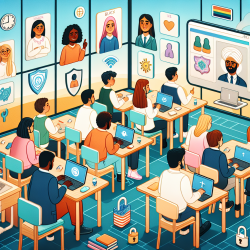The research article "Trends in Bullying Victimization and Social Unsafety for Sexually and Gender Diverse Students" provides a crucial understanding of the disparities faced by sexually and gender diverse adolescents in school environments. This study highlights the ongoing challenges these students face, even amid increasing societal acceptance of sexual and gender diversity. For practitioners in online therapy and special education, implementing the outcomes of this research can significantly enhance their ability to support these vulnerable populations.
Understanding the Findings
The study, conducted in the Netherlands, analyzed data from the Social Safety Monitor survey cycles of 2014, 2016, and 2018. Key findings include:
- Sexual orientation-based disparities in bullying victimization and social unsafety remained relatively small but stable over time.
- Gender diverse adolescents were more likely to be victimized and feel unsafe in school, with larger disparities overall.
- Despite societal acceptance improvements, bullying and social unsafety trends for gender diverse students did not show significant improvement.
Implementing Research Outcomes
To better support sexually and gender diverse students, practitioners can adopt several strategies based on the study's findings:
1. Create Safe Spaces
Ensure that online therapy sessions provide a safe and inclusive environment where students feel comfortable expressing their identities. Encourage schools to establish Gender and Sexuality Alliances (GSAs) to offer peer support and advocacy.
2. Educate and Train
Provide ongoing education and training for school staff on the unique challenges faced by sexually and gender diverse students. This includes recognizing and addressing microaggressions and other subtle forms of discrimination.
3. Monitor and Intervene
Regularly monitor the school climate and intervene promptly when bullying or social unsafety is reported. Use data-driven approaches to identify trends and tailor interventions accordingly.
4. Foster Inclusivity
Promote inclusive policies and curricula that respect and affirm all students' identities. This can reduce feelings of isolation and increase students' sense of belonging.
Encouraging Further Research
While this study provides valuable insights, further research is essential to understand the long-term trends and develop effective interventions. Practitioners should advocate for and participate in ongoing research efforts to continuously improve support for sexually and gender diverse students.To read the original research paper, please follow this link:
Trends in Bullying Victimization and Social Unsafety for Sexually and Gender Diverse Students.










